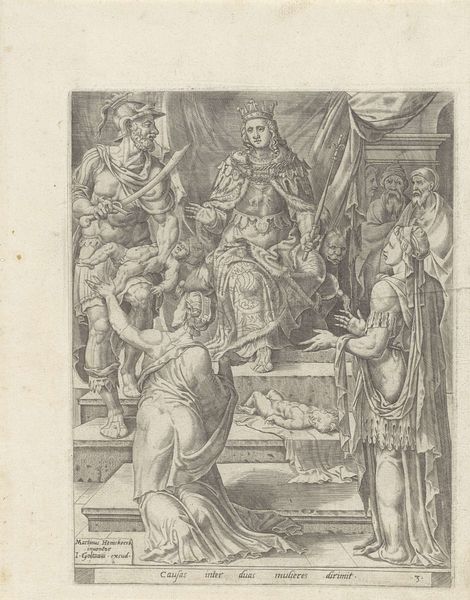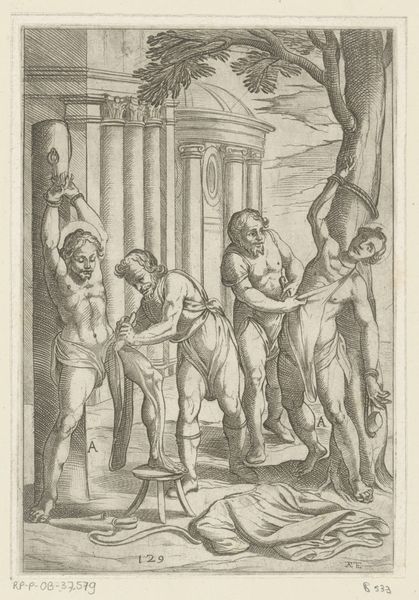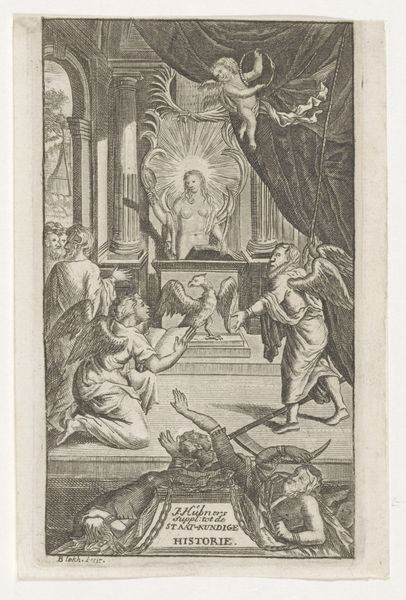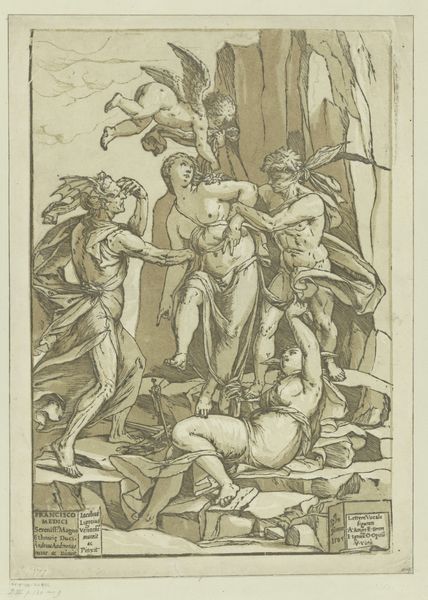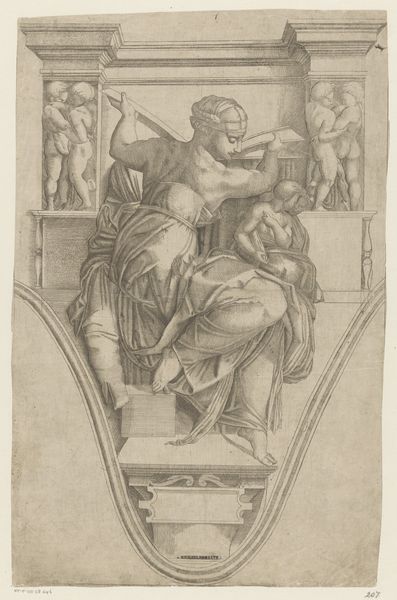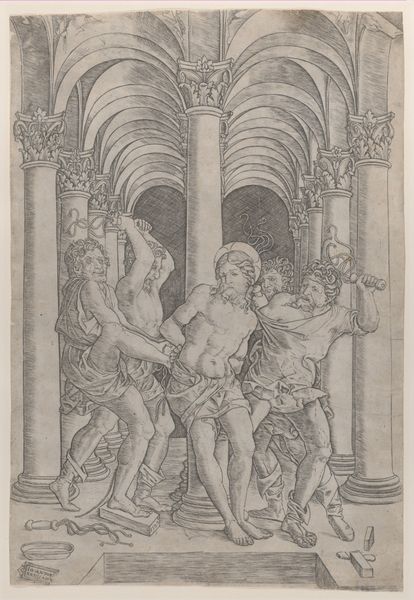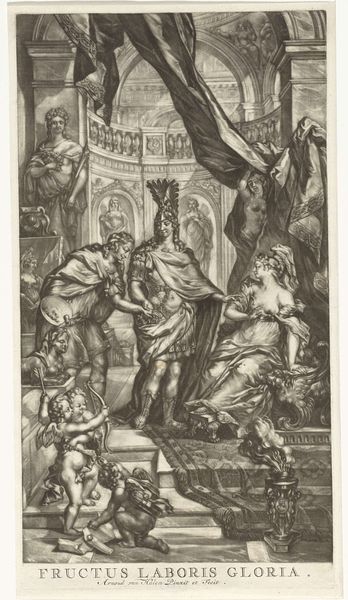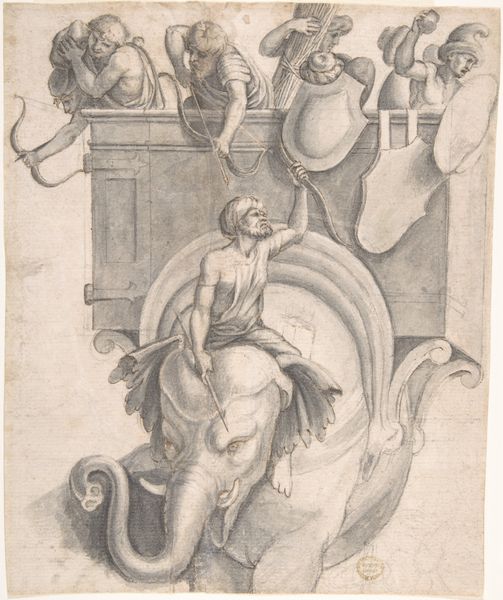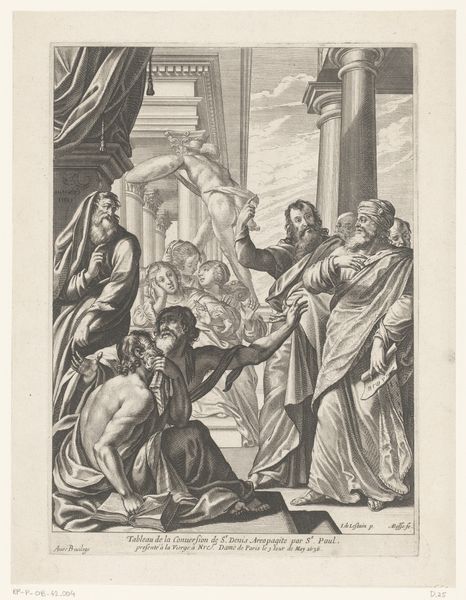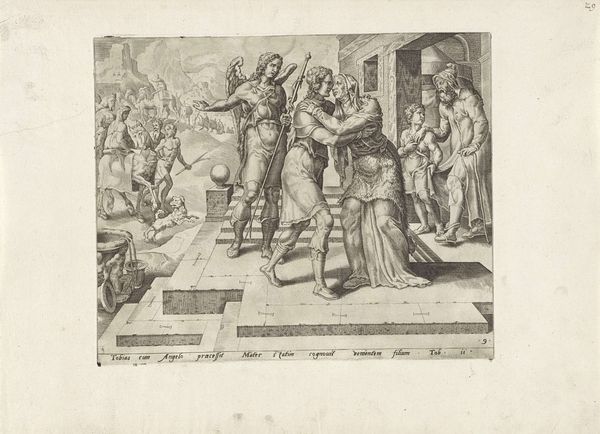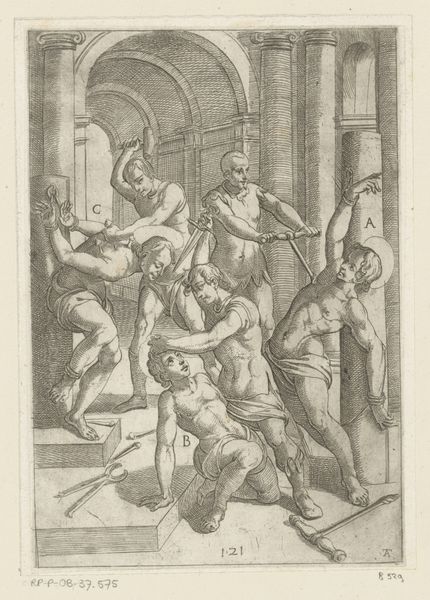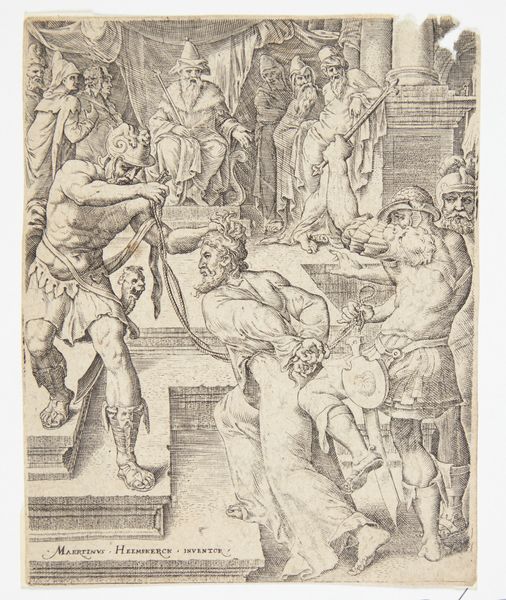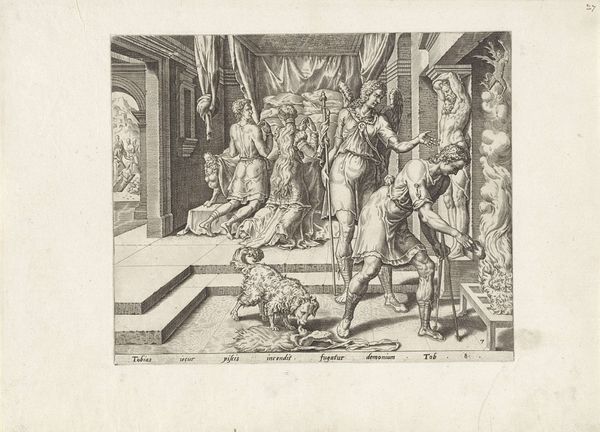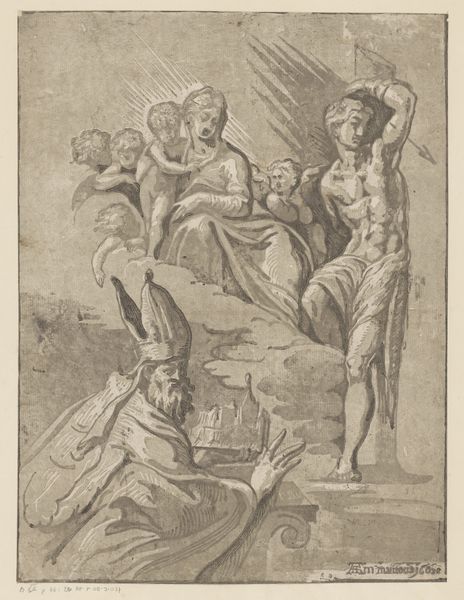
print, engraving
#
baroque
# print
#
old engraving style
#
figuration
#
history-painting
#
engraving
Dimensions: height 194 mm, width 133 mm
Copyright: Rijks Museum: Open Domain
Curator: Oh, that stings, doesn't it? Visually, I mean. The textures, so sharply etched, seem to prick the eyes like those very stakes in the image. Editor: You’ve hit on something interesting. This is "Foltering met stokken met scherpe punten"—Torture with Stakes, in English. It's an engraving, likely from between 1565 and 1630, attributed to Antonio Tempesta. Curator: "Attributed," ah yes, the caveat. So, someone felt this enough to attach his name to the mayhem. The dramatic lighting throws such exaggerated shadows around the poor central figure… what is he meant to represent, I wonder? Editor: That's a key question. Consider that Tempesta lived during a period of intense religious and political upheaval. History paintings such as this had a very public function in framing martyrdom, rebellion, and obedience within the volatile socio-political context of 16th and 17th century Europe. It is part of a wider commentary. Curator: Context, of course, casts a chilling light. I almost wish I hadn’t asked! But look closely: even as they inflict pain, each character’s features remain… well, almost neutral. Is that blandness commentary, or merely a lack of finesse in the etching? Editor: The ambiguity is precisely the point! The so-called banality of evil, no? Engravings like this were reproduced and disseminated widely, shaping popular opinion through potent imagery. Tempesta's style, typical of the Baroque, balances heightened drama with didactic messaging. Curator: So this wasn't just art for art's sake... or art for beauty’s sake, that is. There's something deeply unsettling about thinking this was mass-produced suffering. Editor: Exactly. The work's stark lines and the subject matter’s brutal honesty speak to the period's anxieties and beliefs. Its presence here in the Rijksmuseum today, provokes a different reflection: on how institutions like ours grapple with images that once had such immediate and directive force. Curator: Hmm. Yes. What do we *do* with it now, is a very interesting question. It's always startling to think how such cruelty becomes, eventually, just… an object of study. A bit chilling, when you think about it. Editor: Indeed. Art forces us to continually re-evaluate not just our present values but the very forces that molded them.
Comments
No comments
Be the first to comment and join the conversation on the ultimate creative platform.
